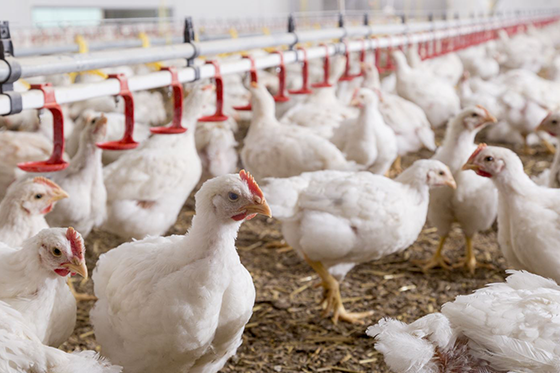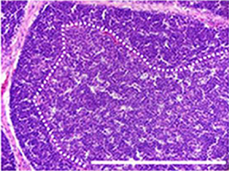Poultry nutrition – 3 reasons you might not be getting the most out of your birds this summer
- Poultry
Heat stress in poultry, especially in broilers aged >3 weeks and layers, causes the loss of performance. Although ambient temperature is the primary reason for heat stress a lot is happening inside the bird. Here are 3 reasons why you might not get the most out of your birds this summer.

1. Heat stress already occurs in spring
Heat stress in poultry is described as the moment a bird stops being able to control body temperature. Occurring when barn temperatures exceed 28°C. Detection of early signs of heat stress can already be found when barn temperatures exceed 21°C. Where minor behavioral changes such as slow panting or reduced feed intake can be detected. For layers it was found that each degree of Celsius increase above 21°C decreased feed intake by 1.5%. Although, this cannot yet be seen as actual heat stress, birds are reducing their energy intake. It is therefore important to ensure that the feed they do ingest is maximally utilized. Either focusing on intestinal health and integrity, maximizing feed digestibility or both.
Pay specific attention to sudden periods of heat stress.
2. Not all heat stress periods are created equal
Summer months are notoriously well known for having long periods of high ambient temperatures (exceeding 28°C for multiple days or longer). During these periods birds require proper management and attention. Nevertheless, these conditions, especially during summer months, can be expected and dealt with accordingly by on-farm stocking of the heat stress solution you require. These solutions are typically added as a drinking water additive focusing on restoring electrolyte balance and body fluid homeostasis. Specific attention must be given to sudden periods of heat stress. Which are most often unanticipated in spring or late summer. Research shows that birds challenged with a sudden rise in ambient temperature are at a much higher risk of death compared to birds reared during longer periods of high ambient temperatures.


Figure 1. Hematoxylin and eosin-stained histological sections of the bursa of Fabricius of 36D old broiler chicks kept under non-heat stress conditions (Left) and heat stress conditions (right) showing clear cell damage under heat stress conditions (Source: Hirakawa et al., 2020)
3. Heat stress impacts the entire body of the bird
Behavioral changes such as self-restriction of feed intake and slow panting not only impact performance and efficiency. It also disrupts organs from functioning properly. Affected organs include the liver, bursa of Fabricius, intestinal tract, oviduct. Intestinal damage following heat stress is caused by a change in blood flow, which is being diverted away from the intestine towards surface areas such as the lungs to increase evaporative loss. A direct consequence of this is hypoxia of the intestinal wall causing change in villus length and decreasing the expression of tight junction proteins. Overall, this decreases nutrient utilization and makes animals more susceptible to absorption of toxins and translocation of pathogenic bacteria into the body.
Finally heat stress increases cell turnover rate, increasing the requirement for more new cells and causing higher rates of cell death. Specifically, damaging immune regulating organs such as the bursa of Fabricius. Which causes the body to stimulate the undesirable inflammatory response and maintains a continuous state of tissue inflammation, making the inflammatory response of the animal inadequate to new infections.